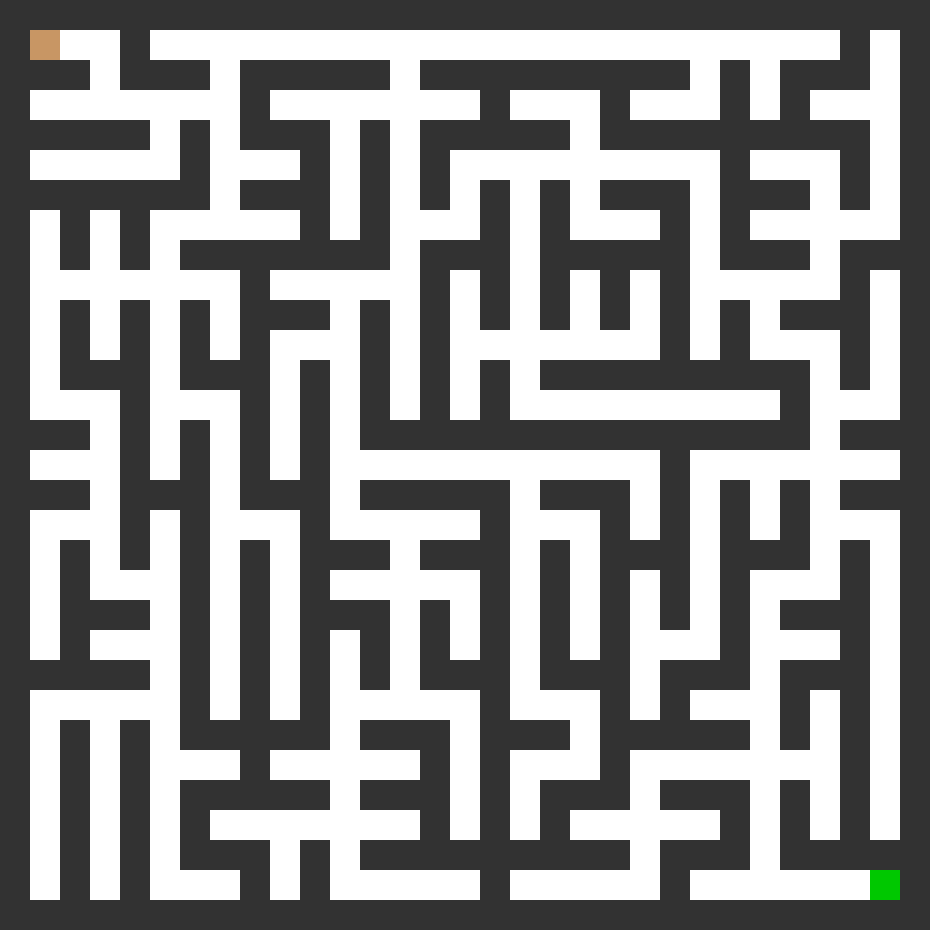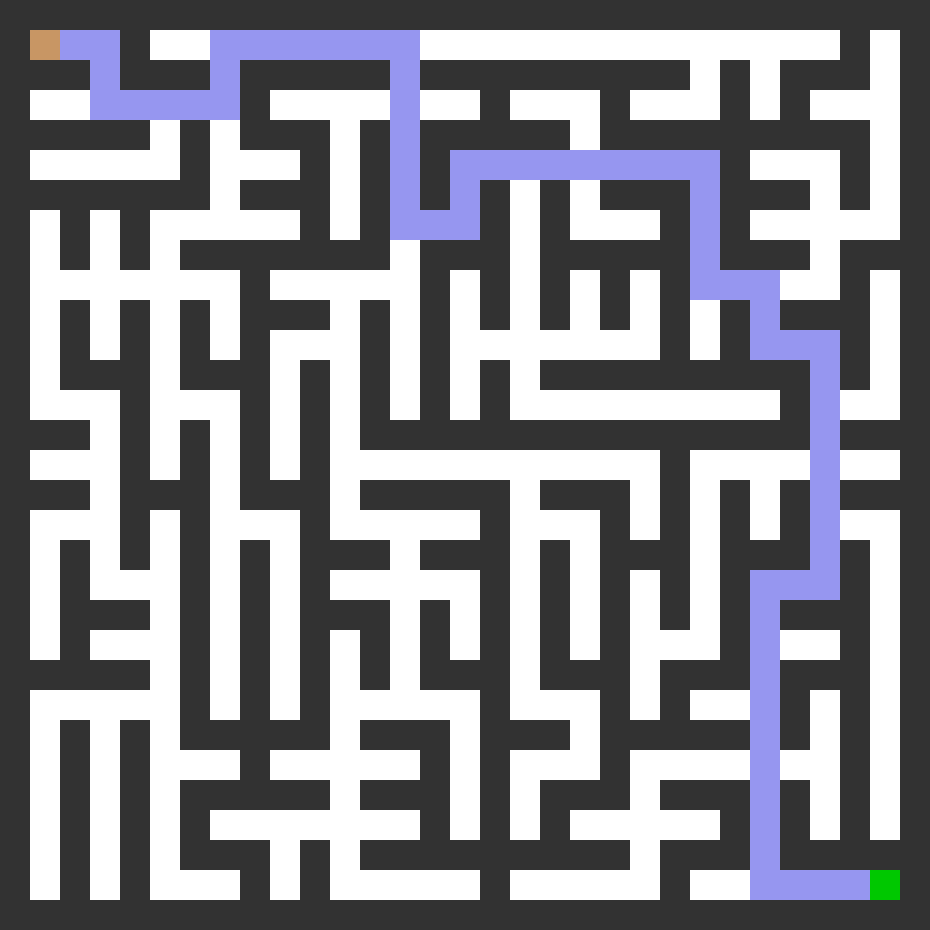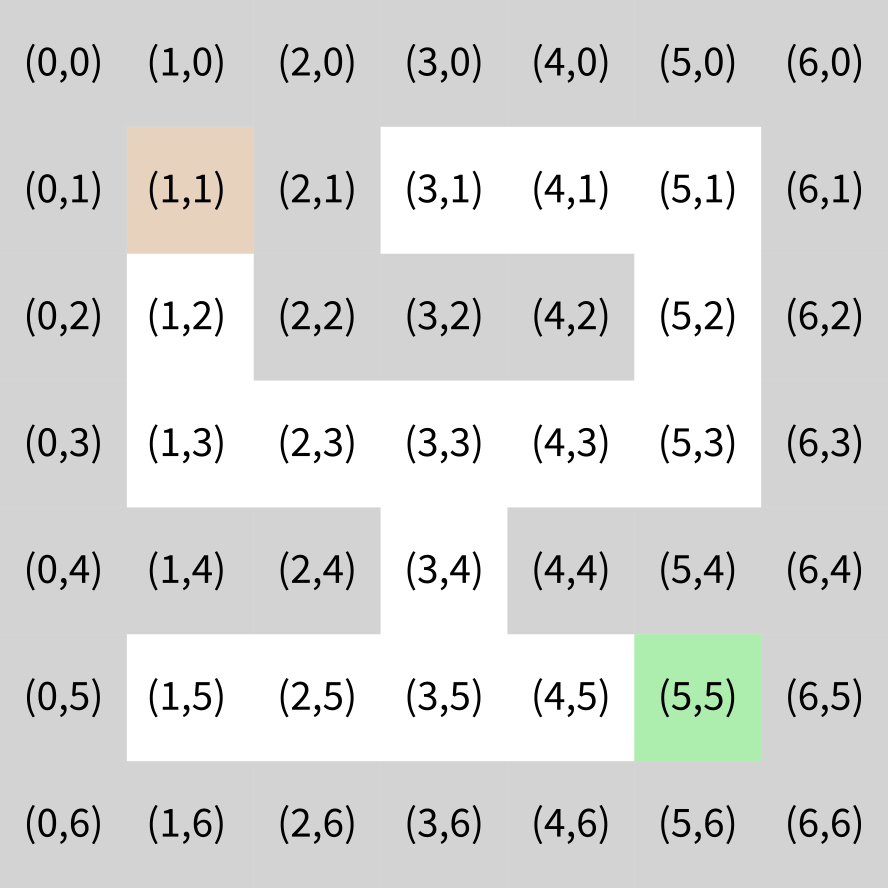Lecture 11
Recursion vs Iteration II
MCS 275 Spring 2023
Emily Dumas
Lecture 11: Recursion vs Iteration II
Reminders and announcements:
- Project 1 due Friday at 6pm
- Project 2 description coming by Monday
- Remember to check the recursion sample code.
Fibonacci timing summary
| n=35 | n=450 | |
|---|---|---|
| recursive | 1.9s | > age of universe |
| memoized recursive | <0.001s | 0.003s |
| iterative | <0.001s | 0.001s |
Measured on my old office computer (2015 Intel i7-6700K) with Python 3.8.5
Call counts
Another way to measure the cost of a recursive function is to count how many times the function is called.
Let's do this for recursive fib.
| $n$ | 0 | 1 | 2 | 3 | 4 | 5 | 6 | |
|---|---|---|---|---|---|---|---|---|
| calls | 1 | 1 | 3 | 5 | 9 | 15 | 25 | |
| $F_n$ | 0 | 1 | 1 | 2 | 3 | 5 | 8 | 13 |
fib is called to
compute fib(n). Then
$$T(0)=T(1)=1$$ and $$T(n) = T(n-1) + T(n-2) + 1.$$
Corollary: $T(n) = 2F_{n+1}-1$.
Proof of corollary: Both sequences $T(n)$ and $2F_{n+1}-1$ have the same first two terms, and obey the same recursion relation. Induction.
Corollary: $T(n) = 2F_{n+1}-1$.
Proof of corollary: Let $S(n) = 2F_{n+1}-1$. Then $S(0)=S(1)=1$, and $$\begin{split}S(n) &= 2F_{n+1}-1 = 2(F_{n} + F_{n-1}) - 1\\ &= (2 F_n - 1) + (2 F_{n-1}-1) + 1\\ & = S(n-1) + S(n-2) + 1\end{split}$$ Therefore $S$ and $T$ have the same first two terms, and follow the same recursive definition based on the two previous terms. By induction, the set of $n$ such that $T(n) = 2F_{n+1}-1$ is all of $\mathbb{N}$.
Corollary: Every time we increase $n$ by 1, the naive recursive fib
does $\approx61.8\%$ more work.
(The ratio $F_{n+1}/F_n$ approaches $\frac{1 + \sqrt{5}}{2} \approx 1.61803$.)
Recursion with backtracking

How do you solve a maze?
Recursion with backtracking

How do you solve a maze?
My guess at your mental algorithm:
- Try something (move around but don't return to anywhere you've visited).
- If you reach a dead end, go back a bit and reconsider which way to go at a recent intersection.
An algorithm that formalizes this is recursion with backtracking.
We make a function that takes:
- The maze
- The path so far
Its goal is to add one more step to the path, never backtracking, and call itself to finish the rest of the path.
But if it hits a dead end, it needs to notice that and backtrack.
Backtracking
Backtracking is implemented through the return value of a recursive call.
Recursive call may return:
- A solution, or
None, indicating that only dead ends were found.
depth_first_maze_solution:
Input: a maze and a path under consideration (partial progress toward solution).
- If the path is a solution, just return it.
- Otherwise, enumerate possible next steps that don't go backwards.
- For each of the possible next steps:
- Make a new path by adding this next step to the current one.
- Make a recursive call to attempt to complete this path to a solution.
- If recursive call returns a solution, we're done. Return it immediately.
- (If recursive call returns
None, continue the loop.)
- If we get to this point, every continuation of the path is a dead end. Return
None.
Depth first
This method is also called a depth first search for a path through the maze.
Here, depth first means that we always add a new step to the path before considering any other changes (e.g. going back and modifying an earlier step).
Maze coordinates

Maze API
Let's explore the Maze class from maze.py.
References
Same suggested references as Lecture 10.
Revision history
- 2022-02-11 Last year's lecture on this topic finalized
- 2023-02-08 Updated version for spring 2023